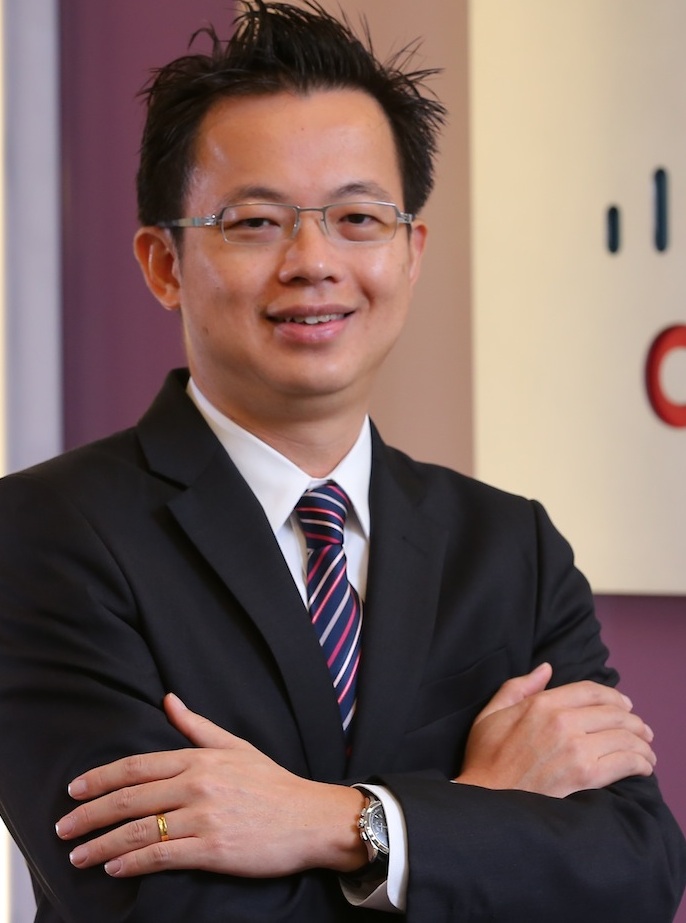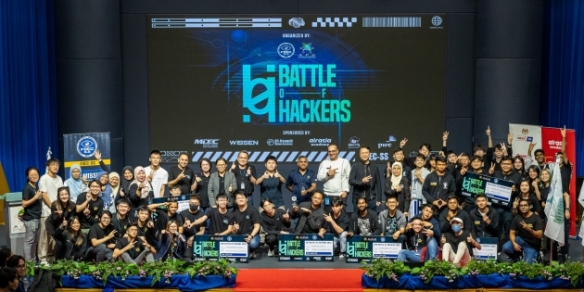Cisco eyes healthcare, govt sectors in Malaysia
By Edwin Yapp & Goh Thean Eu January 28, 2014
- Healthcare, govt sectors key focus this year; banking on innovation to fend off competitors
- Executing strategies well but faces price, competition from Chinese-based vendors: Analyst
 CISCO Systems Inc, the world's largest maker of networking equipment, is eyeing the Malaysian healthcare sector as one of its key priorities for 2014, according to its newly-appointed country head.
CISCO Systems Inc, the world's largest maker of networking equipment, is eyeing the Malaysian healthcare sector as one of its key priorities for 2014, according to its newly-appointed country head.
Speaking to reporters at a briefing on Jan 23, Albert Chai (pic), Cisco Systems (Malaysia) country manager, said that there is demand for smart healthcare services in the country that is expected to pick up in the coming year.
“As far as Malaysia is concerned, I think there's a great potential in the healthcare sector,” he told Digital News Asia (DNA) on the sidelines of the briefing. “It’s still pretty much under-penetrated.”
Chai, who took over the reins of Cisco Malaysia late last year, said in many advanced countries today, patients’ health conditions can be remotely monitored.
This means that even with the patients being at home, their doctors would still be able to have real-time access to their heart condition, blood pressure, glucose level and other biometrics, via their desktop and/ or laptop computers, he added.
“This can help save costs for patients and at the same time, it can allow hospitals to serve more patients," said Chai, adding that this trend has yet to be adopted in countries such as Malaysia.
According to a report from analyst firm Berg Insight, the market for home health monitoring of welfare diseases was worth about US$11 billion in 2008. The reported also noted that the market is expected to grow at about 10% per annum.
In another report, the analyst firm noted that the number of patients using home monitoring systems with integrated connectivity numbered about 2.8 million globally in 2012, and is expected to rise to about 7.1 million by 2017.
“Once this trend picks up, I believe it could help patients save costs and at the same time, hospitals [would be] able to serve more patients, so it’s definitely a win-win situation,” said Chai.
He said Cisco Malaysia’s interest in the Malaysian healthcare sector is part of its broader game plan for 2014, which is to also focus on the government sector. Besides this sector, the networking player is also looking at the public security and safety sectors, Chai revealed.
“The government sector will be one of our main focuses for this year. As has been reported before, the Malaysian Government, via its various transformation programmes, is looking at ways to improve the delivery of public services.
“Public security and safety is one key focus area. By connecting the unconnected, such as transportation, road management of transportation systems, automobiles, you can actually improve public security,” he claimed.
When asked how Cisco was faring in defending its core networking equipment market against major competitors such as China’s Huawei, Chai said he believed the company’s innovation would act as a differentiator from the Shenzhen-based company.
“In the past, Cisco has always stayed ahead of the market through its innovation, so our ability to actually forecast big trends will play a key role in terms of differentiating ourselves from other players,” he said, claiming that the San Jose, California-based company’s ‘innovation DNA’ (deoxyribonucleic acid) will continue to give it the edge.
“For example, if you want to run a high-quality video, you have to tie the network, the security [elements] with the devices in place, all in an end-to-end [manner]. I think this is what will differentiate us,” Chai said, adding that Cisco has the technical know-how to fulfill these requirements.
Challenges exist
 According to an analyst DNA spoke to, Cisco has generally been doing well in the market and has been on track in its execution in the past year.
According to an analyst DNA spoke to, Cisco has generally been doing well in the market and has been on track in its execution in the past year.Sudhanshu Bhandari (pic), senior analyst with Forrester Research, said that in comparison with the global top-five enterprise technology companies, Cisco was the only one to have shown revenue growth in 2013.
He noted that Cisco’s data centre revenues from its UCS (Unified Computing System) and Nexus switches have seen significant growth, to the tune of 40% in the enterprise market, year-on-year.
But the India-based analyst pointed out that despite these impressive growth figures, revenue growth for the company would be challenging in 2014. The company is also expected to struggle in winning mind-share for its smarter and connected communities.
“Cisco will face tough competition from Huawei, which is a strong regional player and which is gaining traction in South-East Asia, especially in the public and education sectors,” Sudhanshu said.
Additionally, Cisco would also struggle in the mid-market segment due to its higher pricing strategy and its hardware-centric approach to software-defined networking (SDN), the analyst argued.
SDN introduces a new control layer that sits between the traditional hardware and software layers of the network. It has been touted as the next big thing in networking because the technology claims to be able to simplify network configuration by doing away with line-by-line configuration in favour of a graphical user interface (GUI).
Sudhanshu said competing vendors such as VMware and Hewlett-Packard are also focusing on SDN and the software-defined data centre (SDDC), and will challenge Cisco in these areas.
“Having a hardware-centric approach to SDN would be a challenge for Cisco as far as revenue growth from the tradition enterprise networking hardware is concerned.
“For large enterprise customers and those with hyperscale data centres, Cisco’s policy-based approach tied to its hardware would be a scalable solution, but the company will face challenges in the mid-market segment and would need to develop more products and offerings to meet that demand,” he added.
Related Stories:
Cloud traffic to dominate data centres: Cisco study
Mimos, HP in alliance aimed at spurring SDN innovation
Networking needs a new paradigm in SDN: Gartner
Vision, not technology, the key to better cities: SAP
For more technology news and the latest updates, follow us on Twitter, LinkedIn or Like us on Facebook.


